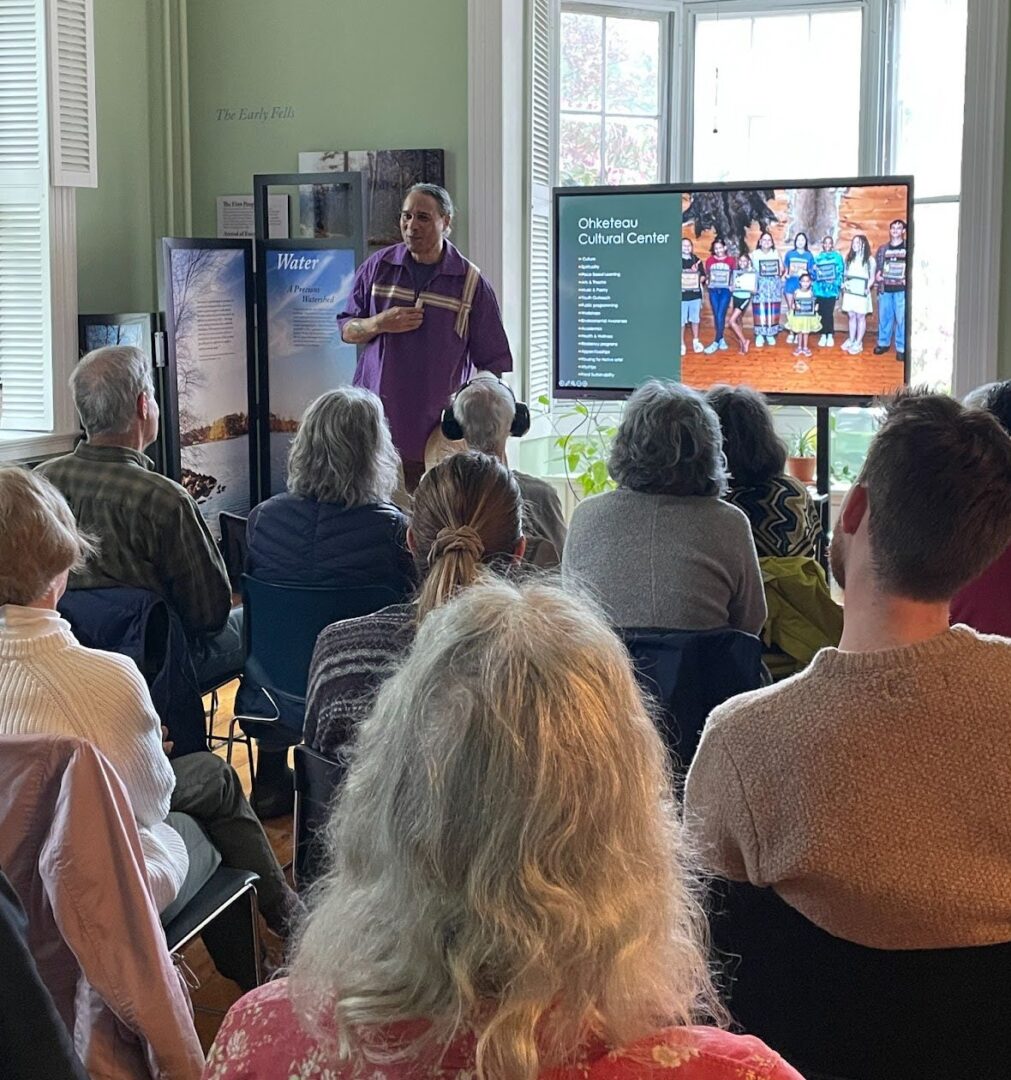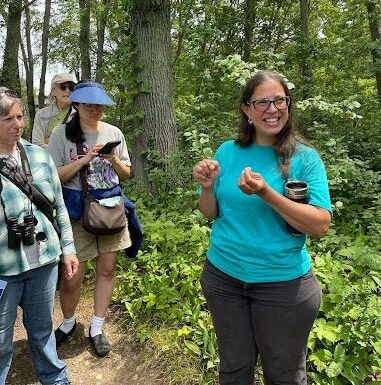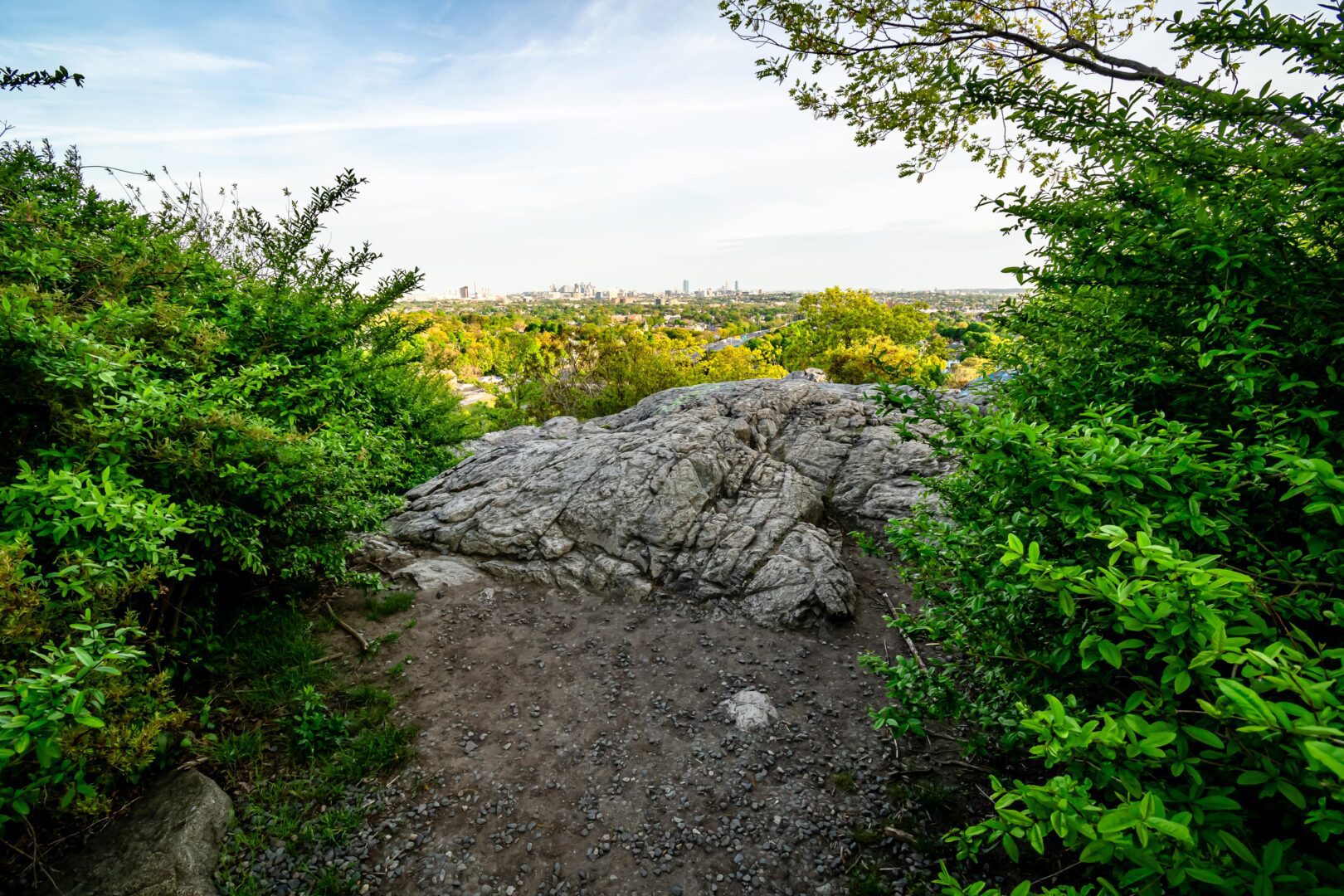
by Niti Seereeram
The Native Land Learning Series, funded by a Freedom’s Way National Heritage Area grant, kicked off on Thursday, May 22nd, with an educational presentation about Indigenous Peoples led by Brad Lopes. Brad is a citizen of the Aquinnah Wôpanâak Tribe on Noepe and Native American Teacher Retention (NATRI) Program Manager at the Mashpee Wampanoag Education Department. Brad covered the rich linguistic and cultural history of tribal communities in the Dawnland, the Wabanaki term for New England, which references the sun rising over the Eastern portion of the continent.
Brad described the close kinship and linguistic ties between tribes before European colonization, which focused on relationships with land, water, and community. These relationships were disrupted due to disease, loss of land, and forced assimilation of Indigenous peoples into Western ideology and are still seen today: a phenomenon called ongoing settler colonialism, in which Indigenous communities have less access to safe housing, education, and resources. Brad advocated for Indigenous sovereignty and cultural resilience through decolonized historical understanding in education and better public awareness of Indigenous histories and experiences. Brad works to assert Indigenous presence and rights to their ancestral homeland by revitalizing language and traditional practices through programs like the Wampanoag Language Reclamation Project. Visit https://www.aquinnah.org/team/brad-lopes to learn more and get involved with his work.

On Saturday, May 23rd, we welcomed Larry Spotted Crow Mann to the Fells for our second event in the series. Larry is an enrolled citizen of the Hassanamisco Nipmuc Tribe, an award-winning author, and director of The Ohketeau Cultural Center. He shared his personal story of overcoming alcohol addiction and dedicating his life to supporting Native youth and preserving Native American culture, language, and traditions through storytelling, education, and community programs. He emphasized the need for accurate Indigenous representation in school curricula and the important role of storytelling in Native American culture as a method of teaching, healing, and preserving traditions. From kindergarten through college, most students are not provided with meaningful, accurate, or comprehensive content about the diverse Native American Tribes and their histories across the United States, leading to poor outcomes for Native Students, including perpetuation of stereotypes and unsafe experiences for students.
Larry founded the Ohketeau Cultural Center as a space to uplift Indigenous voices, dismantle unjust frameworks, educate youth, and provide a safe space for the community to gather. The center focuses on education, culture, health, and wellness, offering various programs like youth events, vaccine clinics, and cultural workshops. Larry is also the author of many books, including “The Adventures of Kehteau,” which follows a young Nipmuc boy as he explores different tribal lands across Indian Country and learns about the diverse languages, lands, and traditions. You can check out “The Adventures of Kehteau” and Larry’s other works at whisperingbasket.com.

The series concluded on Friday, July 11th with a Fells plant walk led by Elizabeth James-Perry, an Aquinnah Wampanoag Culture Bearer, Educator, and restorative Native gardener who is dedicated to the revival and continuity of valuable Indigenous knowledge. Walking among the summer blooms of the Fells, Elizabeth identified Indigenous plants and discussed the valuable role these plants play in tribal life and culture. Plants such as black birch, bee-balm, and winterberry can be brewed into medicinal teas. The fiber from milkweed plants is utilized in weaving and textile-making among many Indigenous communities. The bright red Sumac berries can be used as a permanent red dye and are a great source of vitamin C.
A steward of her own native garden, Elizabeth emphasized the importance of maintaining sustainable and regenerative native habitat to increase ecological function. She encouraged conservation organizations to partner with Indigenous tribes and invest in traditional ecological knowledge practices, such as oyster beds and controlled burns for sustainable land management. After the walk, Elizabeth shared her Wampum jewelry, a traditional and contemporary coastal Algonquian art form, made from quahog clams. Thick, durable, and marbled in purple and white coloring, Wampum was historically used for record keeping and treaty making within tribes. Elizabeth’s Wampum artwork explores themes of the Northeastern Woodlands, maritime traditions, and Native identity and sovereignty. To see more of her artwork available for purchase, go to https://elizabethjamesperry.com/ and visit Elizabeth’s recent garden installations at the Native Herring Garden in Chelsea, MA, and the Little Compton Historical Society Sculpture Garden in RI.
Thank you to Freedom’s Way National Heritage Area for making this Native Land Learning Series possible! If you’d like to support our educational initiatives and our indigenous people programming, please consider making a donation or becoming a member of the Friends of the Fells today.
